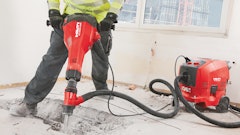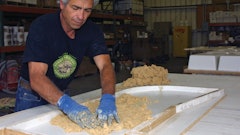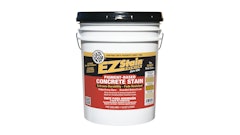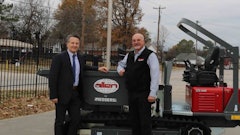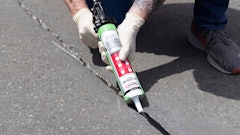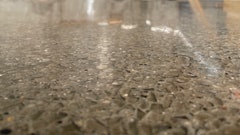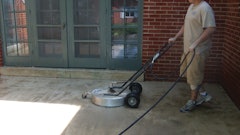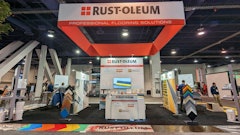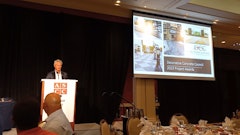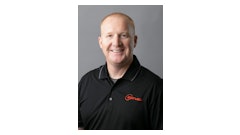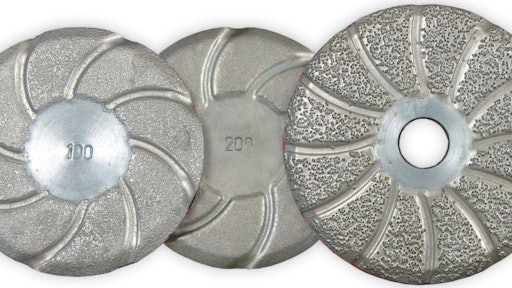
With the increasing popularity of polished concrete, it comes as no surprise that the number of tooling manufacturers and the tooling options have grown tremendously. Understanding how diamond tools work is a must to anyone who wants to be successful in this industry.
“We have seen many people jump in the concrete polishing business thinking it is all about running a machine and swapping diamonds, and that diamonds are all the same,” says Mark Elliott, Concrete Products Manager at Superabrasive Inc. (a manufacturer of diamond tools and equipment, including the LAVINA line). “But there is nothing further from the truth. As a diamond tool manufacturer with over 25 years of experience, we know how many variables are in the manufacturing process, and they all impact the performance of each tool. It is very easy to copy the shape and design of a tool, but almost impossible to replicate the exact bond matrix and formula.”
Grit and bond
Diamonds are not all the same. The two terms most often used are grit and bond. Most diamond tools are made of synthetic diamond powder, measured in microns and called grit, and a bonding material, usually metal or resin, or a combination of bonding materials. They are bonded together through injection molding, hot and cold pressing, electroplating, and vacuum brazing.
Each grit is designed to refine the scratch pattern, and the rule of thumb is each consecutive grit is to be approximately doubled in size, so it can remove the scratches of the previous step. For example, if you start with 30 grit, the next grit is 50 or 70, then 100 or 120, 200 or 220, 400, 800, etc. Following proper grit sequence is a fundamental principle in concrete processing. Skipping a grit step will put you up against some serious scratched floor challenges. The grits steps are usually divided into three stages — grinding, honing and polishing.
Grinding
Grinding includes the steps from the lowest starting grit (it depends on the floor and application and could be as low as six grit but typically 30 or 50 grit) up to 120 grit. The tools used here are usually metal-bond tools, brazed tools for lippage removal and floor leveling, or pcd tools for coating and glue removal. There are many shapes and designs on the market — round button segments, rectangular segments, single, double or multiple, plugs, etc. But what is more important, especially in the initial cutting steps, is the bond or hardness of the tools. Many contractors have trouble understanding how bonds work relative to different kinds of concrete. Depending on the bonding material, abrasives have different hardness which determines how diamonds are exposed. Hard concrete requires a softer bond to prevent glazing and to allow new diamonds to get easily exposed for maximum cutting. Soft concrete requires a harder bond, so it can last longer (soft bond will cut but it will wear out too fast on soft concrete).
Honing
Honing includes the steps between 100 to 400 grit, the tools used in this stage are usually hybrids and/or resins. The hybrids, made of a combination of bonding materials — metals, resins, or ceramics (such as Superabrasive’s Calibra discs or HD discs), are especially useful for removing scratches left by the metal bond tools.
Polishing
Polishing is from 800 grit up to 3,500 grit. The most popular choice for concrete polishing are resin pads/pucks, which are made of poly-phenolic and ester-phenolic. Another thing to consider when choosing tools is there are bonds/tools designed for wet use only, dry use only or wet/dry use. Improper use can cause problems like glazing, sticky residue on the floor, and so on.
“Following all the grits may seem like a lot of steps, but well-trained contractors know that this is crucial for proper floor refinement and achieving a good wear-resistant floor finish,” says Elliott. “It is tempting to buy the cheapest diamonds but concrete grinding and polishing is a very labor-intensive business and lost productivity and time spent redoing a floor is much more costly.”
The point made is that not all diamond tools are created equal, and diamond tools should be always chosen relative to a specific project. Knowing what kind of concrete you are dealing with is important for finding the right combination of bonds and grits which will increase your productivity and ROI, and produce the best floor finish.
Mark Eliott is Superabrasive’s Concrete Products Sales Manager, and a veteran of the concrete industry. Superabrasive Inc. has been manufacturing high quality diamond tools and equipment since 1987. Superabrasive manufactures the popular LAVINA line of floor machines, vacuums and tools for floor prep, polishing and maintenance. For more information call 1-800-987-8403 or visit www.superabrasive.com.






